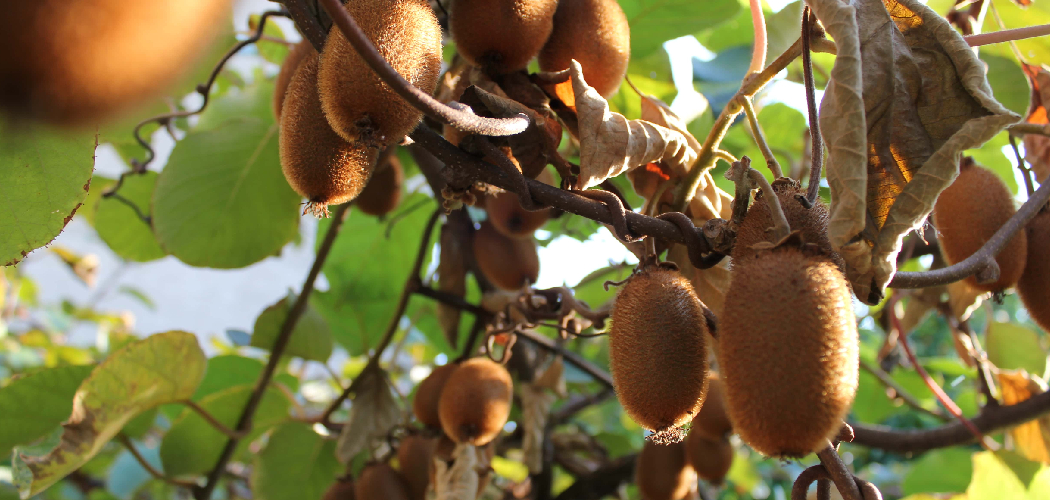Kiwi trees, also known as kiwi vines, are a rewarding addition to your garden. With their striking vines and nutrient-rich fruits, they bring a unique touch to outdoor spaces while offering delicious produce. However, understanding how to plant kiwi tree correctly is essential for healthy growth and harvesting success.
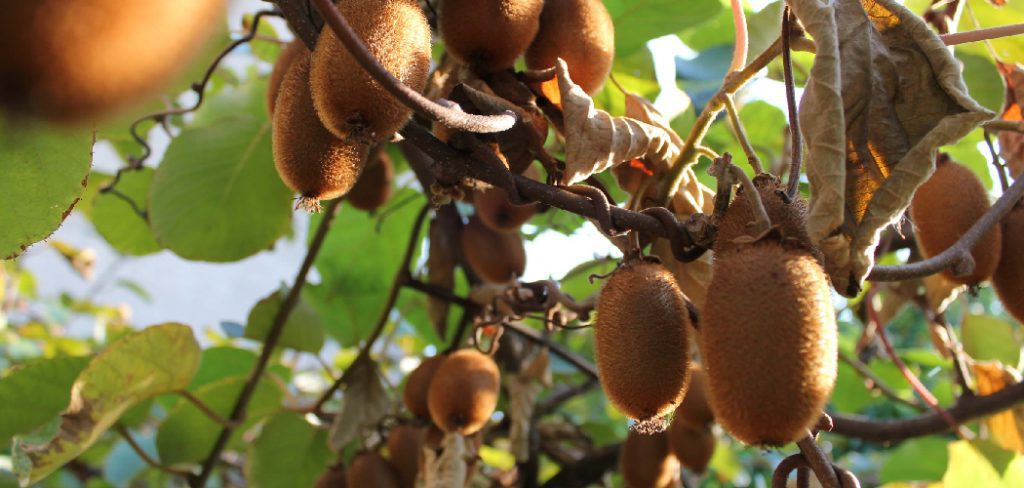
This detailed guide covers everything from selecting the right location and preparing the soil to caring for your vines year-round. By following these steps, you can enjoy a fruitful and thriving kiwi tree in your garden for years to come.
Understanding Kiwi Trees
Types of Kiwi Trees
Kiwi trees are available in diverse varieties suited for different climates and gardening preferences. The most common types include:
- Hardy Kiwis (Actinidia arguta): These kiwis are well-suited for colder regions, as they can withstand temperatures as low as -25°F (-31°C). They produce grape-sized, smooth-skinned fruit with a slightly sweeter taste than traditional kiwis.
- Fuzzy Kiwis (Actinidia deliciosa): These kiwi plants prefer warmer climates and are known for their characteristic brown, fuzzy skin and tangy-sweet flavor. They thrive best in regions with temperate weather.
- Arctic Kiwis (Actinidia kolomikta): Perfect for gardeners in extreme northern climates, Arctic kiwis offer cold hardiness similar to hardy kiwis and produce small, tasty fruits. They’re also known for their variegated leaves, adding an ornamental feature to gardens.
Choosing a variety based on your climate and preference for fruit size and taste is key to a successful kiwi growing experience.
Kiwi Tree Growth Requirements
Kiwi trees require specific growing conditions to thrive. These plants demand:
- Sunlight: Kiwi vines need full sun exposure for at least 6 to 8 hours a day to maximize photosynthesis and encourage fruit production.
- Temperature: While hardy kiwis can survive extreme cold, fuzzy kiwis prefer mild climates where winter temperatures remain above 10°F (-12°C).
- Soil: Well-draining, fertile soil with a pH level between 5.5 and 7.0 provides the ideal environment. Conduct a soil test before planting to ensure the right acidity and nutrient levels.
- Space: Kiwi plants are climbers and need ample room to spread. Provide at least 10 to 20 feet of horizontal space per plant.
Preparing the Planting Site
Choosing the Right Location
When planting kiwi trees, the location is pivotal to their success. Select an area that offers:
- Full Sun: Choose a spot that receives uninterrupted sunlight throughout the day. Avoid shaded areas, as lack of sunlight restricts vine growth and fruit production.
- Protection from Frost: Frost can damage new shoots and flowers. Situate your kiwi plants away from frost pockets—areas where cold air tends to settle, like at the bottom of slopes.
- Good Airflow: Proper ventilation reduces the risk of fungal diseases by preventing excess humidity around the leaves and vines.
Soil Preparation
Good soil preparation establishes a strong foundation for kiwi trees. Begin by:
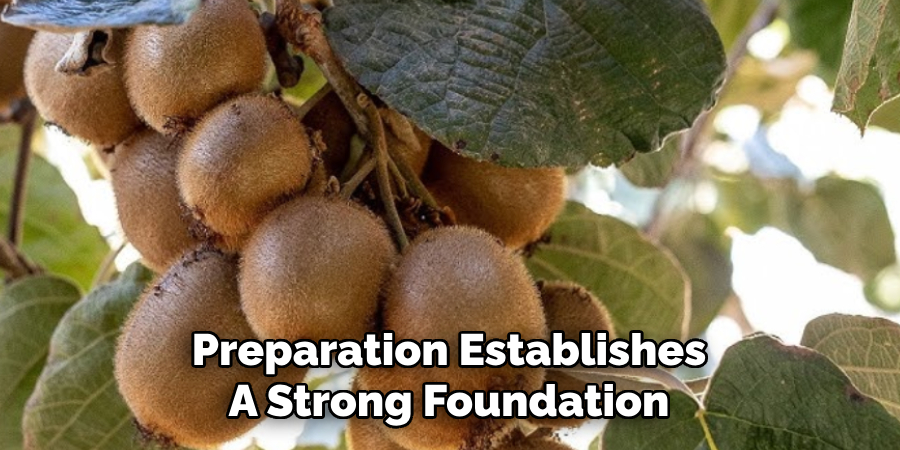
- Testing the Soil: Use a home soil test kit to determine the soil’s pH and amend it accordingly. Add sulfur to lower alkaline soil or lime to raise acidic soil levels.
- Improving Fertility: Incorporate organic matter like compost, rotted manure, or leaf mold to boost soil nutrients. This organic amendment also improves water retention and aeration.
- Creating Drainage: Avoid waterlogged conditions by adding coarse sand or creating raised beds if your soil has clay content. Proper drainage prevents root rot, a common issue with kiwi plants.
Selecting Kiwi Plants
Choosing Male vs. Female Plants
Kiwi plants are dioecious, meaning separate male and female plants are needed for reproduction. For successful pollination:
- Male Plants: Responsible for producing pollen, male plants don’t bear fruit but are vital for pollinating female flowers.
- Female Plants: These plants bear fruit once pollinated. A ratio of one male plant to every 6-8 female plants is recommended to optimize fruit production.
If space is limited, opt for self-fertile varieties like ‘Issai,’ which produce both male and female flowers, although the output may be lower.
Purchasing Healthy Plants
When purchasing kiwi plants, look for:
- Vivid Green Leaves: Healthy foliage without discoloration or wilting.
- Strong Roots: Inspect the root ball for signs of vigorous, well-established roots.
- Disease-Free Plants: Avoid plants with spots, pests, or moldy stems.
- Ideal Age: Seedlings aged one to two years adapt faster to transplanting than younger plants.
Local nurseries or online plant suppliers specializing in fruit trees are excellent sources for obtaining kiwi plants.
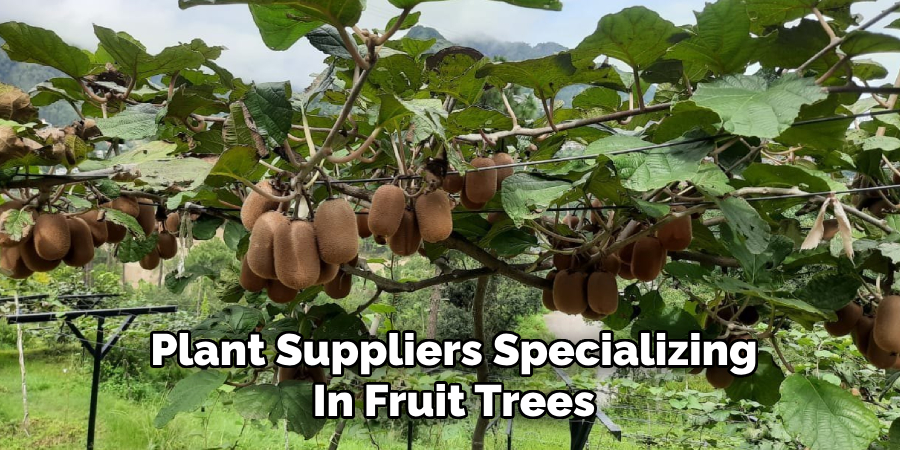
How to Plant Kiwi Tree: Planting Process
Best Time to Plant
Early spring is the ideal time for planting kiwi trees. The weather is mild, allowing new plants to establish roots before facing temperature extremes. Alternatively, planting in late fall is feasible in areas with mild winters, provided you mulch heavily to protect the roots.
Step-by-Step Planting Process
Follow these steps to plant kiwi vines effectively:
- Digging the Hole: Dig a hole that’s twice the width and depth of the root ball to provide ample space for root growth.
- Positioning the Seedling: Place the plant in the hole, ensuring the root crown (where the base meets the roots) remains level with the soil surface.
- Filling: Refill the hole with the original soil mixed with compost, gently firming it to remove air pockets.
- Watering: Water thoroughly to settle the soil and hydrate the roots.
- Mulching: Spread a 2-3 inch thick mulch layer around the base but keep it about 2 inches from the trunk to prevent rot.
Creating a Support Structure
Importance of Trellises
Kiwi vines can grow vigorously, reaching heights of up to 20 feet. Trellises are essential for:
- Supporting the plant’s weight as it develops.
- Maximizing sunlight exposure for optimal growth.
- Reducing the risk of disease by improving airflow.
Without a trellis, kiwi vines tangle and sprawl, complicating maintenance and reducing fruit quality.

Building and Installing Trellises
Constructing an effective trellis system doesn’t require advanced skills. Here’s how to build a basic one:
- Use strong wooden posts or metal pipes for durability.
- Anchor the posts 15-20 feet apart and secure them deep into the ground.
- String galvanized wire horizontally in rows spaced 1-2 feet apart to allow vines to grab on as they grow.
Regularly adjust vines to guide them along the trellis for neat growth and productive yields.
Caring for Kiwi Trees
Watering Needs
Kiwi plants have moderate moisture needs. Water thoroughly but ensure periods of drying between watering to avoid waterlogging. During fruiting seasons, maintain even soil moisture to prevent fruit drop.
Fertilization
- Early Spring: Apply nitrogen-rich fertilizer to promote leafy growth.
- Mid-Summer: Use balanced fertilizers rich in potassium and phosphorus to enhance flowering and fruiting.
Apply fertilizer at the dripline (outer edge of the plant’s reach) for even nutrient absorption.
Pruning and Training
Prune kiwi vines during dormancy to maintain shape and vigor. Focus on removing:
- Dead or damaged branches.
- Overcrowded shoots need to improve air circulation.
- Old wood, while retaining productive canes for fruiting.
Training the vines on the trellis system ensures organized growth, making maintenance more manageable.
Common Issues and Solutions
Pests and Diseases
- Spider Mites: Treat infestations by spraying horticultural oil.
- Leaf Spot: Remove infected leaves and apply fungicides to prevent spread.
Regular inspections and prompt action maintain your vines’ health.
Environmental Challenges
Gaunt weather, such as frost and wind, requires proactive measures. Use frost covers and wind barriers while monitoring soil conditions to combat these challenges.
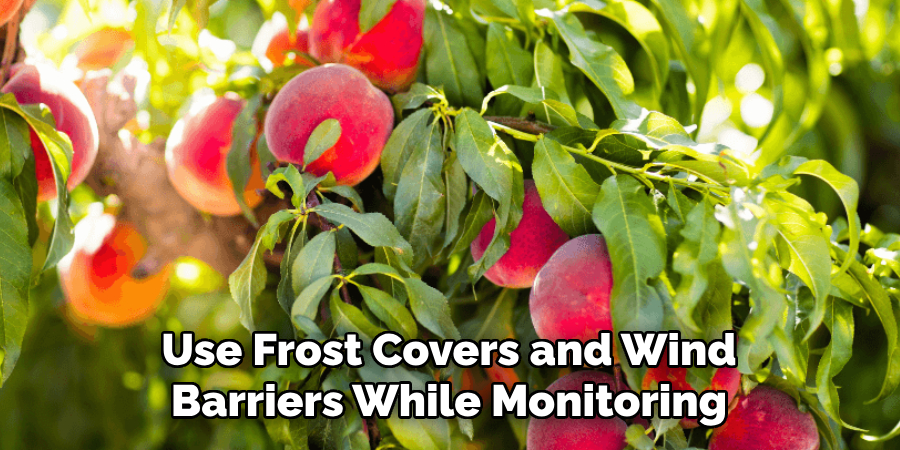
Harvesting Kiwi Fruits
When to Harvest
Harvest kiwis in late fall when the fruits have achieved full size and have slightly softened. Gently press the fruit, checking for a slight give as an indicator of ripeness.
Harvesting Techniques
Cut fruits using sharp scissors to avoid damaging the stems. Store harvested kiwis in a refrigerator to preserve their freshness for up to three months.
Kiwi Tree Maintenance for Year-Round Health
Pruning
Kiwi trees require annual pruning to maintain their shape and allow sunlight to penetrate the canopy, promoting fruit growth. Remove dead or damaged branches first, then trim back new growth to about six buds.
Fertilizing
Fertilize kiwi trees in spring and mid-summer using a balanced fertilizer with equal amounts of nitrogen, phosphorus, and potassium. Avoid over-fertilization as it can lead to excessive vine growth instead of fruit production.
Pest Control
Common pests for kiwi trees include spider mites, scale insects, and aphids. Monitor your tree regularly for signs of infestation and treat with organic insecticides if necessary.
Frequently Asked Questions About Kiwi Tree Care
How Much Water Do Kiwi Trees Need?
Kiwi trees require consistent moisture, especially during the growing season. Watering deeply once or twice a week is usually sufficient, but adjust based on weather and soil conditions to avoid waterlogging.
When Should Kiwi Trees Be Pruned?
Pruning is best done during the winter when the plant is dormant. Focus on removing deadwood, crowded branches, and lateral vines to encourage healthy growth in the upcoming season.
How Long Does It Take For A Kiwi Tree To Bear Fruit?
Kiwi trees typically take 3 to 5 years to produce fruit after planting. Proper care, including regular pruning and fertilization, can help optimize fruit production over time.
Do Kiwi Trees Require A Pollinator?
Most varieties of kiwi trees are either male or female, and at least one of each is needed for successful pollination and fruit development. Ensure the proper ratio of male to female plants in your garden.
Can Kiwi Trees Grow Indoors?
While kiwi trees are generally outdoor plants, certain hardy or dwarf varieties can be grown in large pots indoors. However, these plants still require ample sunlight and space to thrive.
Conclusion
By learning how to plant kiwi tree correctly, you’ll create the perfect conditions for robust vines and an abundant kiwi harvest. With careful planning, ongoing care, and timely harvesting, your kiwi-growing endeavor will become a centerpiece of your gardening accomplishments. There’s no better time to get started than today!

